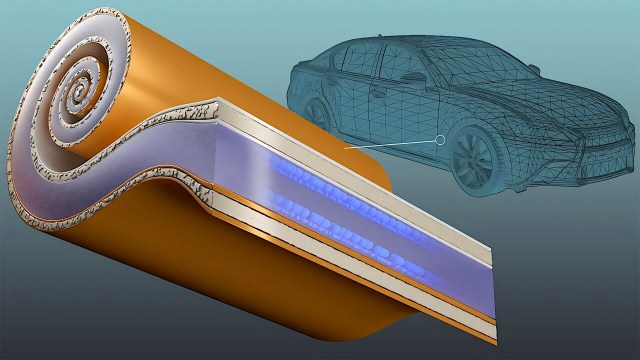Researchers Achieve Major EV Battery Breakthrough: 'This Provides Significant Savings'

Innovations in Electric Vehicle Battery Technology
Researchers at the Oak Ridge National Laboratory in Tennessee have made a groundbreaking advancement in electric vehicle (EV) battery technology by significantly reducing the use of copper in current collectors. This innovative approach has led to impressive results, including cost reductions and enhanced performance.
In traditional batteries, ions move between two electrodes — the anode and cathode — through the electrolyte. At the end of each electrode is a metal current collector, which conducts electricity from the battery to a circuit to power the EV. Typically, copper is used for the anode, and aluminum is used for the cathode, as reported by ORNL and the U.S. Department of Energy.
The researchers have replaced most of these metals with a polymer, or plastic, which they sandwiched between the remaining copper or aluminum. This new design not only reduces the reliance on critical materials but also offers substantial cost savings. According to lead researcher Georgios Polyzos, "This provides a significant savings on near-critical materials, because much less copper and aluminum are needed."
Copper, a key material in this process, has been subject to fluctuating trade tariffs, particularly under the administration of former President Donald Trump. Recently, there were plans for a 50% levy on copper imports, as reported by CNBC. Similarly, other battery components like graphite have faced export restrictions in various countries. These challenges have prompted EV and battery specialists globally to seek out cheaper, more efficient parts with regional supply chains.
Some unconventional materials, such as sodium, potassium, and even cow hair, have gained attention in recent discussions about battery innovation. The ORNL design not only improves energy density — the amount of power stored per pound — but also allows for charging to 80% in just 10 minutes. Moreover, the storage level remains stable after 1,000 cycles.
"We take 80% of the metal out, which makes it harder to do things quickly. But they've shown that you can still get fast charge and discharge," said Brian Morin, CEO of Soteria Battery Innovation Group, who collaborated with ORNL on this project. Soteria built the current collector and worked alongside the research team.
This innovation cuts costs by 85%, reduces weight by three-quarters, and increases energy capacity by 27%, offering longer trips for EV users. Additionally, the added polymer helps address another major concern: battery fires. While rare, lithium-ion blazes can be intense. The current collector acts like a circuit breaker inside the battery, eliminating about 90% of lithium-ion battery fires caused by short circuits.
According to the International Energy Agency, global EV sales increased by 25% last year, reaching 17 million cleaner rides. These vehicles help reduce thousands of pounds of heat-trapping air pollution compared to gas vehicles, benefiting public health as noted by the Environmental Protection Agency.
In the United States, tax breaks of up to $7,500 for EV purchases will expire on September 30 due to the One Big Beautiful Bill Act. Purchasing an EV now could lock in additional savings. EV owners typically save up to $1,500 annually on gas and maintenance costs. Many states also offer their own incentives that will remain in effect.
Using home-based solar panels to charge your EV can provide further savings. EnergySage is a trusted resource that can assist in securing rebates and finding the right installer. However, the bill also reduces residential solar tax credits at the end of the year.
At ORNL, the team's current collector could soon be integrated into the latest batteries. The component can be manufactured using a simpler roll-to-roll production process. It is expected to "significantly advance the performance metrics of lithium-ion batteries in electric vehicle applications," according to the release.
Stay informed with the latest innovations improving our lives and shaping our future by joining our free newsletter. Don't miss this cool list of easy ways to help yourself while helping the planet.